Photos by Garrick Ramirez; Peter Thomsen; Liz Birnbaum / Santa Cruz County; Christopher Reynolds / Los Angeles Times
17 things to do in Santa Cruz, the old-school beach town that makes for a charming getaway
On a spring day in Santa Cruz, visitors have a perplexing opportunity: to see a city thriving and shrinking, all at once.
The thriving is no great surprise, really: Santa Cruz sits on a handsome perch at the northern edge of the Monterey Bay, neighbored by redwood forests. It has been attracting heat-fleeing visitors from inland California since at least 1907, when the Santa Cruz Beach Boardwalk opened.
That amusement park might still be the city’s most widely recognized attraction. I love the sight of its lights and scaffolding at night, and if you remember the 1987 movie “The Lost Boys,” you’ll recognize it as a hangout for a vampire gang led by Kiefer Sutherland.
If you find your way there, whether it’s summer or not, you’ll see that Santa Cruz is dominated by surfers, tech workers and students at UC Santa Cruz. For good reason, the city carries a reputation as an artsy, woodsy, liberal enclave. Despite the pandemic, ambitious and distinctive restaurants have multiplied in recent years, including Copal (see below), Vim and Bad Animal, a restaurant-bar-bookshop hybrid that I hope to hit on the next trip.
So how is the city shrinking? One of the area’s greatest challenges is coastal erosion, accelerated by climate change. This shows up in frequent road-repairs along West Cliff Drive after winter storms, as waves eat away at the sea cliffs. In the Pleasure Point neighborhood and elsewhere, local leaders have tried to blunt the sea’s force with rip-rap and seawalls. (In Santa Cruz-adjacent Aptos, the state announced Feb. 16 that it would tear down the storm-damaged Seacliff Pier.)
This is a common California issue: On average, one study found, the state’s coast is losing 2 inches per year. Santa Cruz’s share of that erosion just happens to be particularly spectacular.
In other words, the longer you wait to see Santa Cruz, the less of it there will be.
Here’s a look at 17 things a visitor can do in and around Santa Cruz, all of which I’ve tried in recent months.
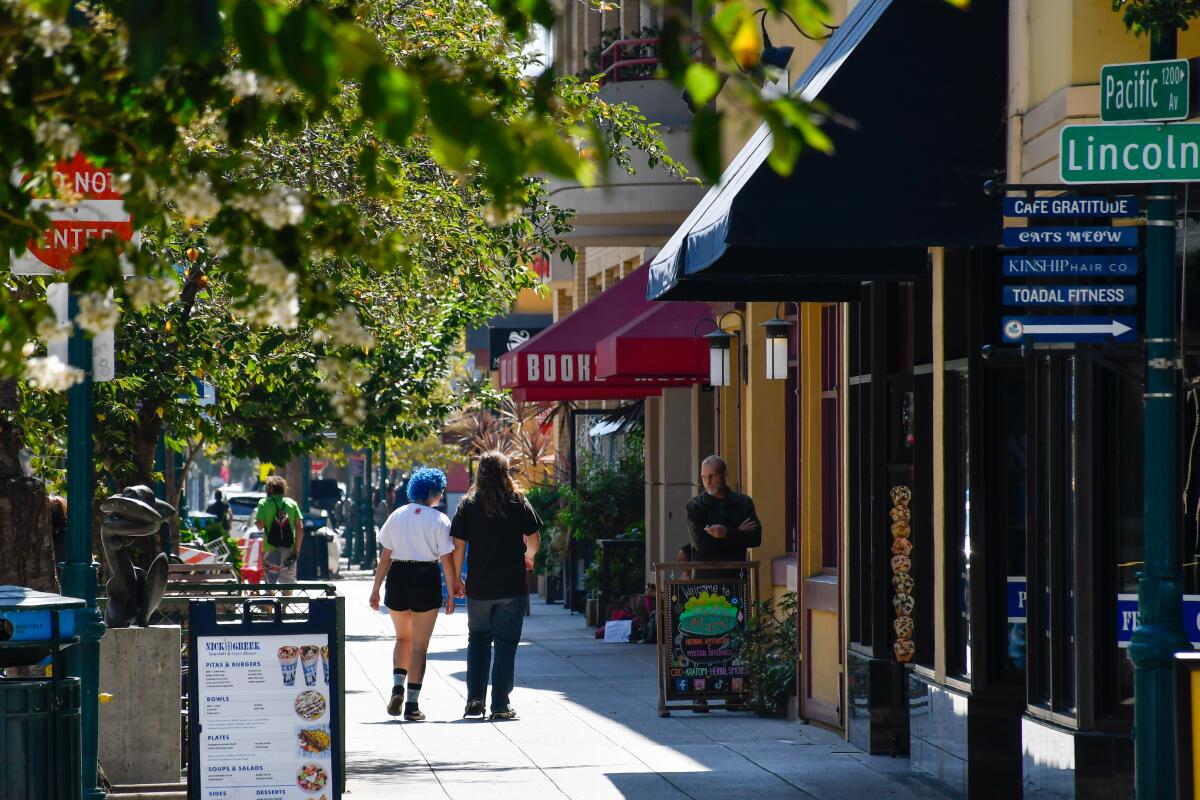
Meander the eclectic Pacific Avenue
For instance: Zoccoli’s deli (family-run since 1948) has hot and cold sandwiches. Artisans & Agency has colorful art, graphics and home goods.
Also close at hand on Front Street is the Abbott Square Market, a food court with coffee, sushi, tacos, pizza, pastries and weekend music that opened in 2017. The Santa Cruz Museum of Art and History is next door.
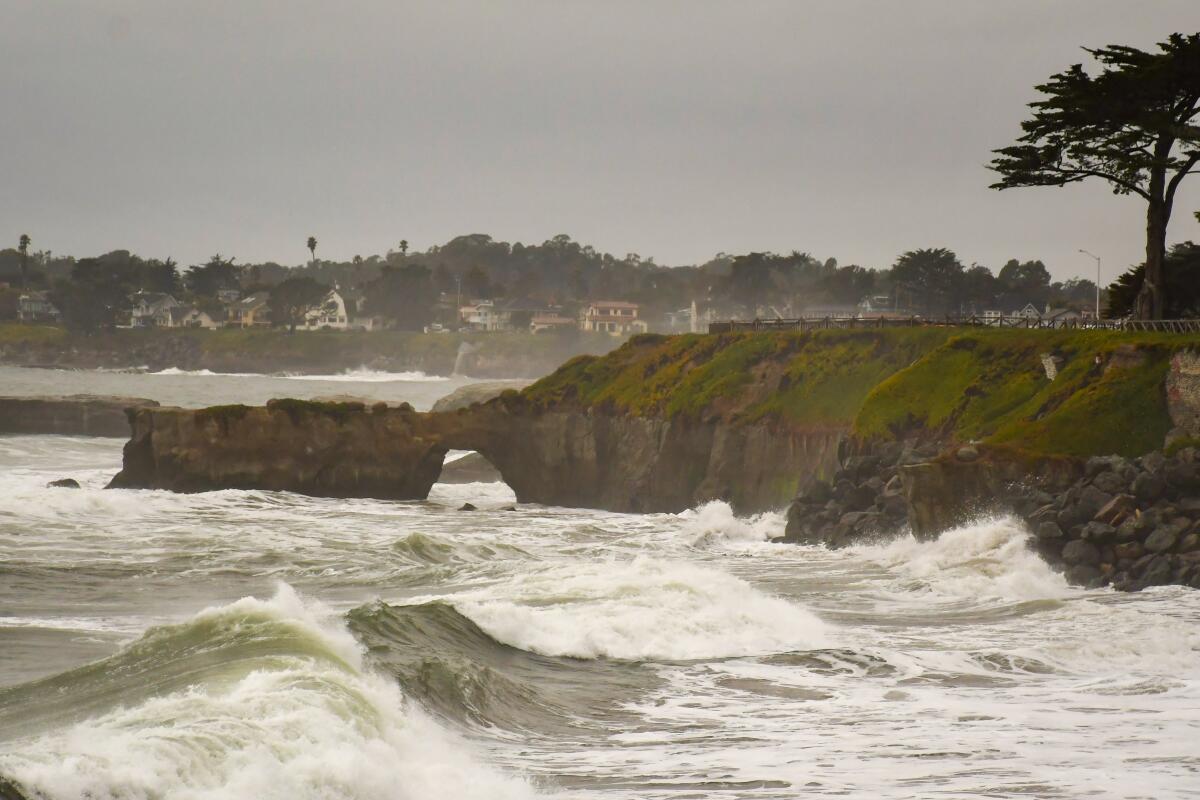
West Cliff Drive, Santa Cruz
Begin at the Municipal Wharf and follow the road, which runs along the coast, for about 3 miles west to Natural Bridges State Park. This blufftop route takes you past great old houses, bold new houses, erosion damage from January’s storms, Steamer Lane surf break, a handsome lighthouse (which has a little surfing museum inside) and a surfer statue before it ends at Natural Bridges State Park.
Natural Bridges is a tiny park (65 acres) but a well-placed one, with one beach, tide pools, a eucalyptus grove where monarch butterflies gather in fall and an emblematic natural rock bridge. (There used to be another one, but it fell into the sea in 1980.) Day-use fee: $10 per vehicle.
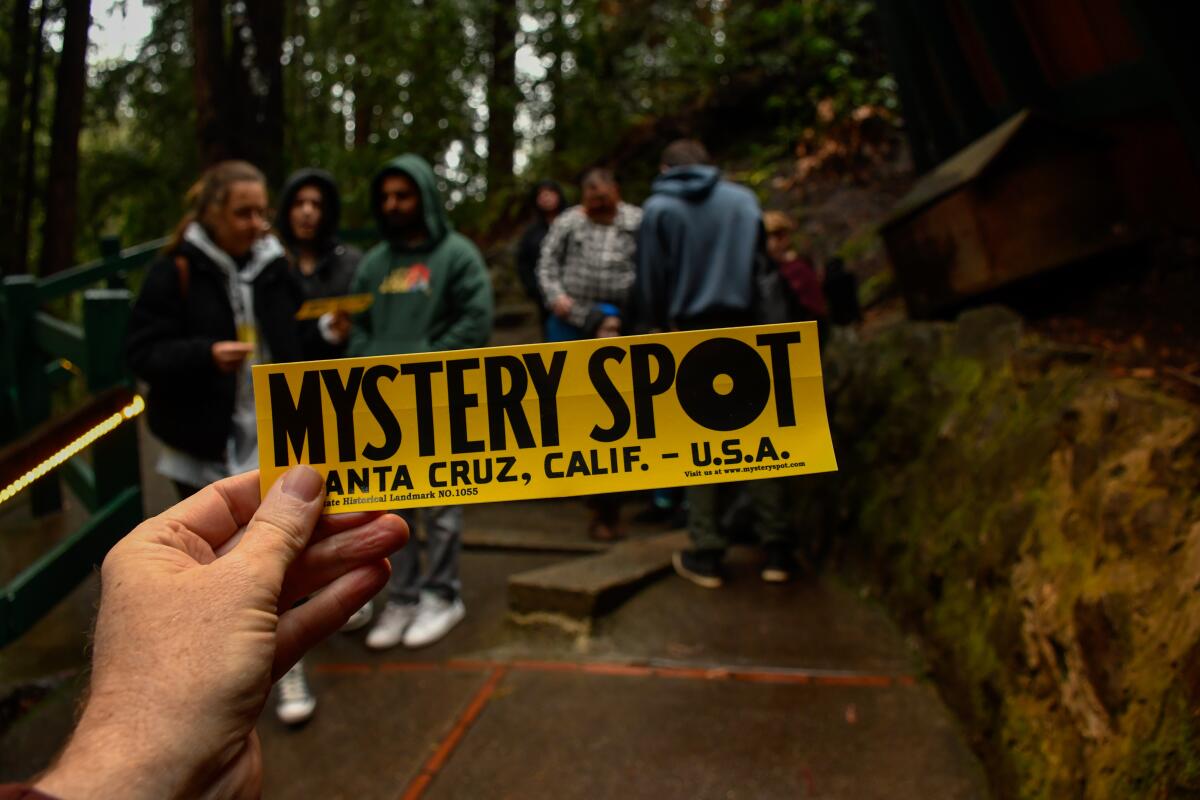
The Mystery Spot, Santa Cruz
It’s good, clean, kitschy fun “nature’s black magic”), neighbored by a 30-minute hiking trail amid redwoods, oak and eucalyptus. It’s open daily with tours every half hour, reservations recommended. Besides the $10 admission fee, parking costs $5 per vehicle (cash and checks only). But you do get free bumper stickers at the tour’s end. And the gift shop — it’s as cheesy and extensive as they come. I went home with a tilted coffee mug.
Bonus tip: Unique as it may seem, the Mystery Spot is part of an entire genre of roadside attractions based on optical illusions and gravity and born in the 1930s and ‘40s. Others include the Oregon Vortex (,since 1930 in Gold Hill, Oregon), Trees of Mystery (since 1946 in Klamath) and Confusion Hill (since 1949 in the Mendocino County town of Piercy), and Mystery Hill (since 1958, or perhaps sooner, in Blowing Rock, N.C.
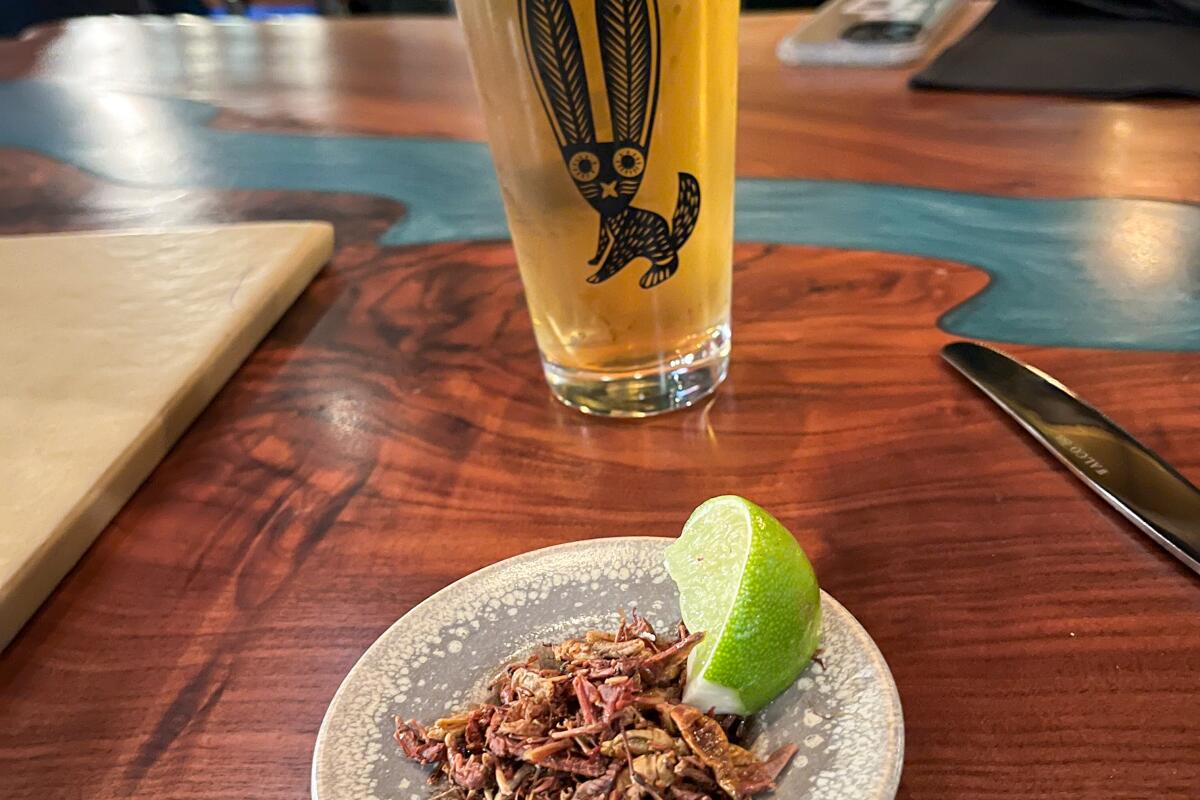
Taste mole and sample grasshoppers at Copal
The chef is Ana Fabian Mendoza, raised in the town of San Martín Tilcajete, Oaxaca. She has been cooking in the U.S. for close to 20 years, but continues to draw on family recipes.
Lunch, dinner, cocktails, beer, wine and selections from a long mezcal menu are served in a dining room that somehow combined industrial and folk art elements. Main dishes $15-$21.

Appreciate pasta at La Posta
The restaurant, 16 years old, stresses its pasta made from scratch and local farmer partners (oh, and pizza with house-made sausage). Pastas might include tagliatelle with locally foraged chanterelle and black trumpet mushrooms. Pizzas are often $19-$22, pastas $27-$28, main courses $32-$33. Open for dinner only.
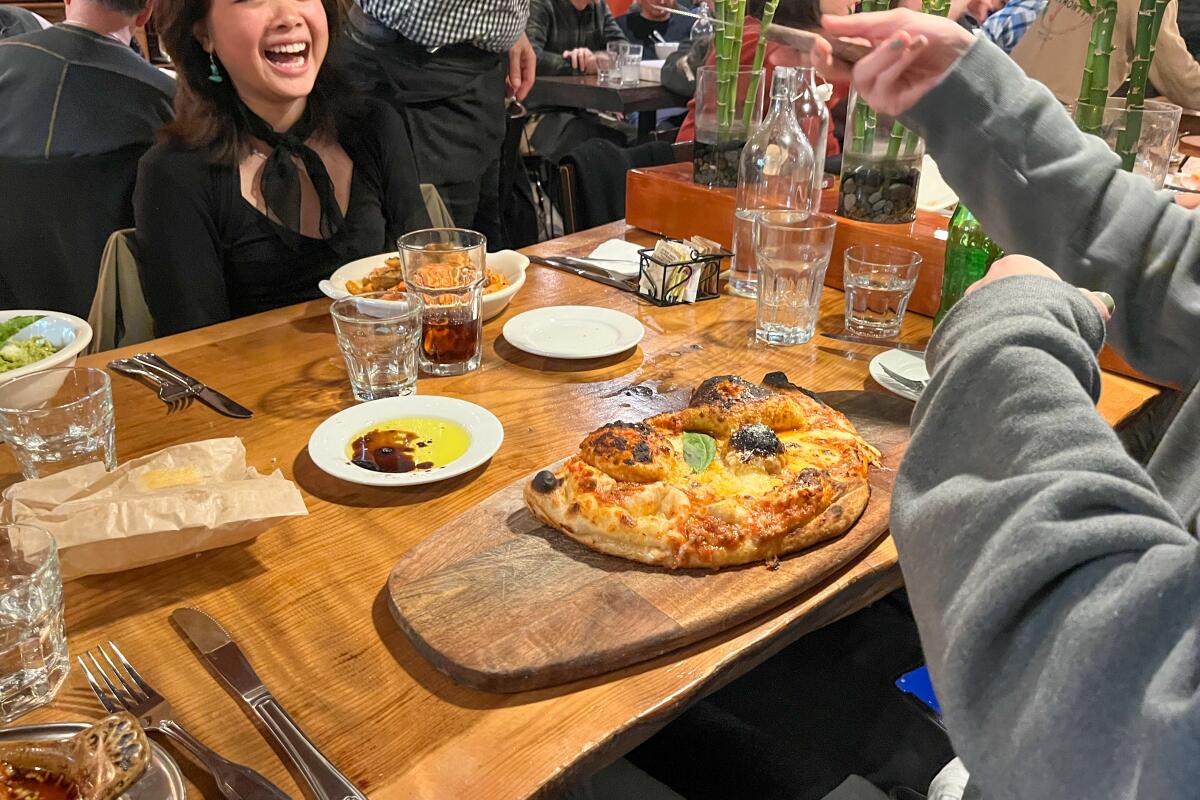
Try the lasagna at Tramonti
I can vouch for chef Matteo Robecchi’s lasagna, and the calzoni (three kinds) were tempting too. Pizzas typically $18-$26, pastas $24-$29, specialties $23-$32. Lunch and dinner daily.
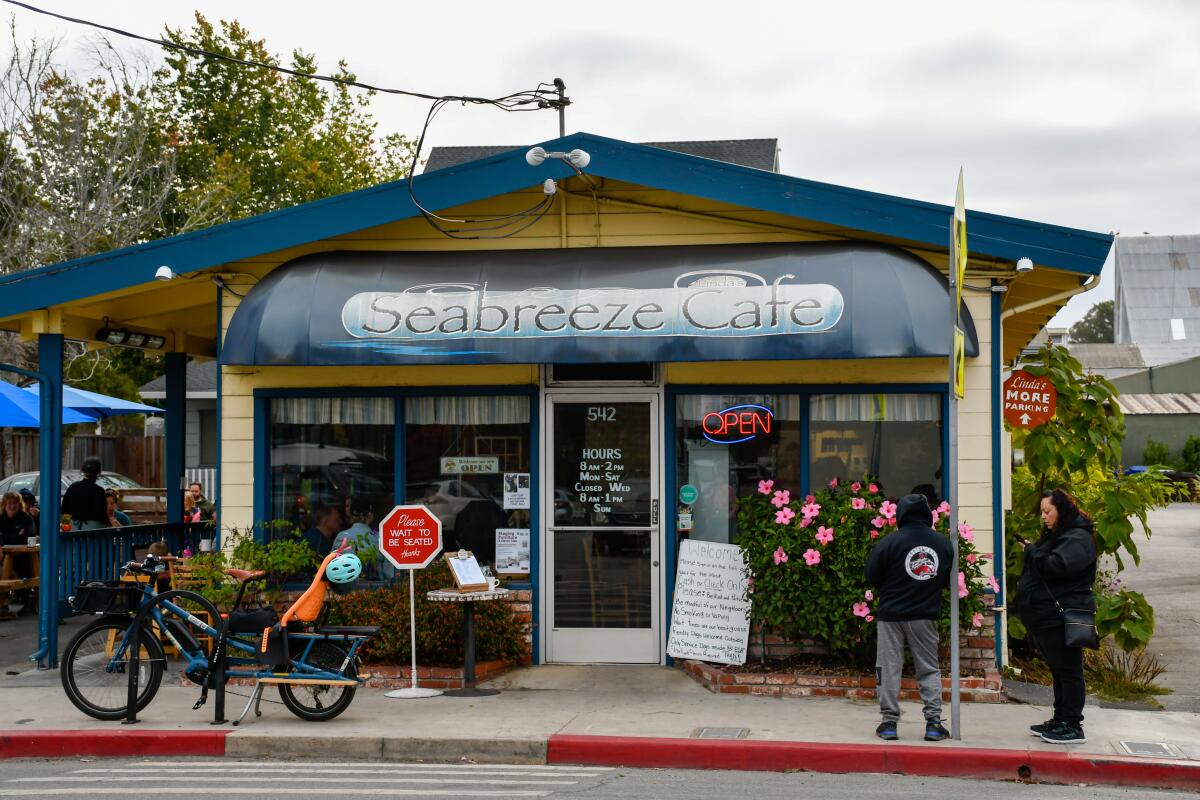
Grab breakfast at the Seabreeze Cafe
There are no reservations taken and often there’s a line.
Be sure to note: The cafe is closed Wednesdays, and it doesn’t do credit cards.

Catch the sunset from Cliff Drive Vista Point
Photographers: If you hike down from the blufftop point, you can catch the boardwalk’s festive lights reflected in the San Lorenzo River as it empties into the Pacific.
The drawback is that this mini-park’s ragged landscaping and erosion. But the price (nothing) is right. And the rest of the Seabright neighborhood is a pleasure to explore on foot, from the increasingly fancy cheek-by-jowl houses to the casual eateries and bars on Seabright Avenue.
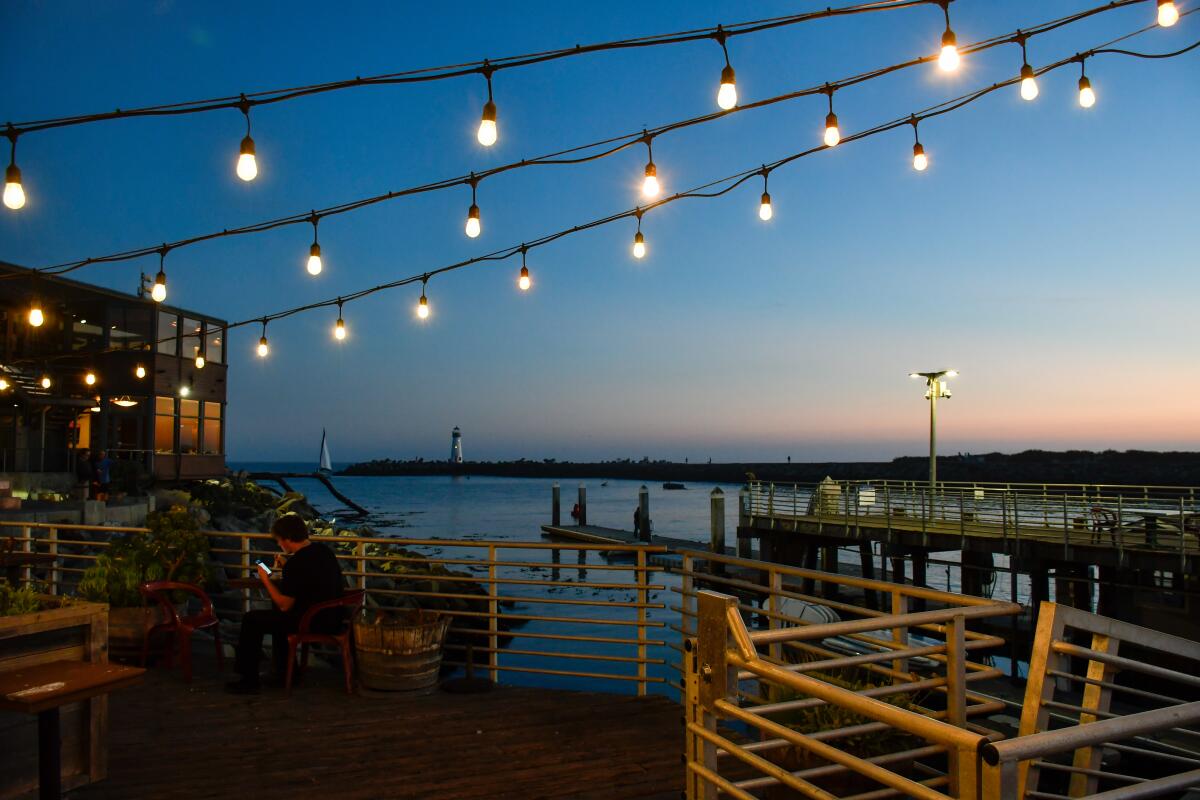
Mark an occasion at the Crow's Nest
It’s a two-level operation (officially, the upstairs is the Breakwater Bar & Grill) restaurant and bar with a lighthouse in the foreground of its ocean views. Breakfast, lunch and dinner, surf and turf — and surfboards and old surfing photos on display, of course. The Crow’s Nest has live music Wednesday-Saturday nights and comedy on Sunday nights.
The Crow’s Nest is, however, expensive; main dishes are $26-$64. If you’re looking for a less spendy option, check out the Crow’s Nest’s Beach Market, just a few steps away on the neighboring dock. Open since 2013, it does wood-fired pizza, sandwiches and breakfast burritos. The market also sells, gifts, souvenirs and home goods.
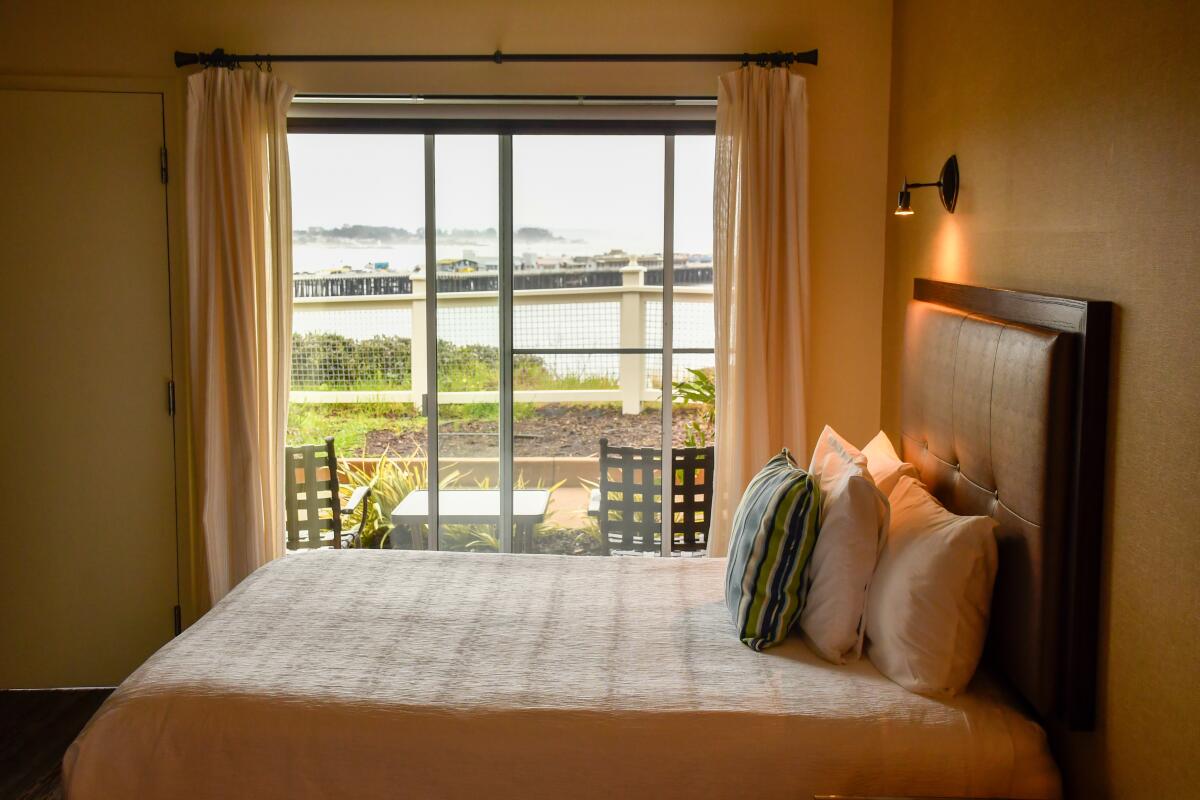
Watch the wharf and waves from the Sea & Sand Inn
I can’t say it’s cheap. Though its weeknight rates get down to $199, spring and summer weekend prices often begin at $339 nightly. Next door at the Dream Inn (which also has groovy Midcentury style in its favor) the rates can be $100 higher.
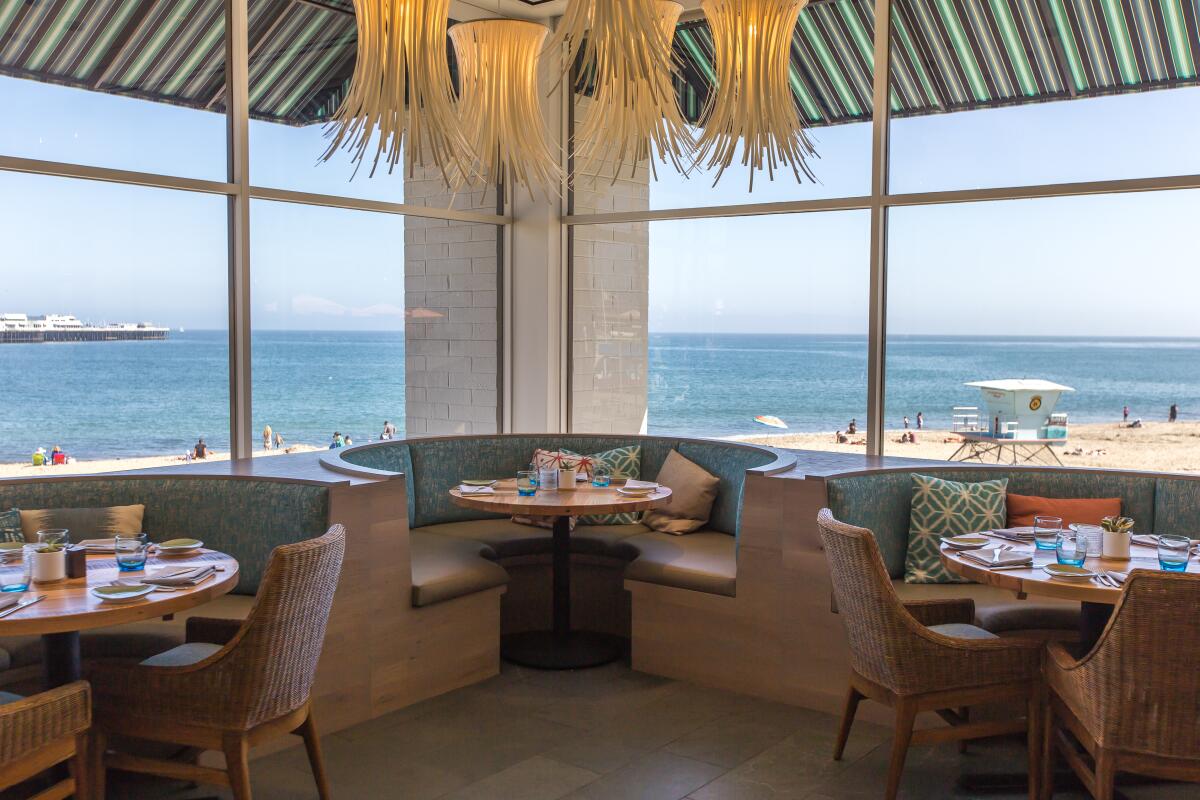
Savor chowder and the view at the Jack O'Neill Restaurant
The dining room, open for breakfast, lunch and dinner, is an airy space with great views of the sea and wharf.
The restaurant is connected with the upscale Dream Inn and its prices are similarly high. At $15 a bowl, the clam chowder is about 50% pricier than you’ll find in restaurants on the wharf — but mine was really good. Dinner main dishes are $30-$53.
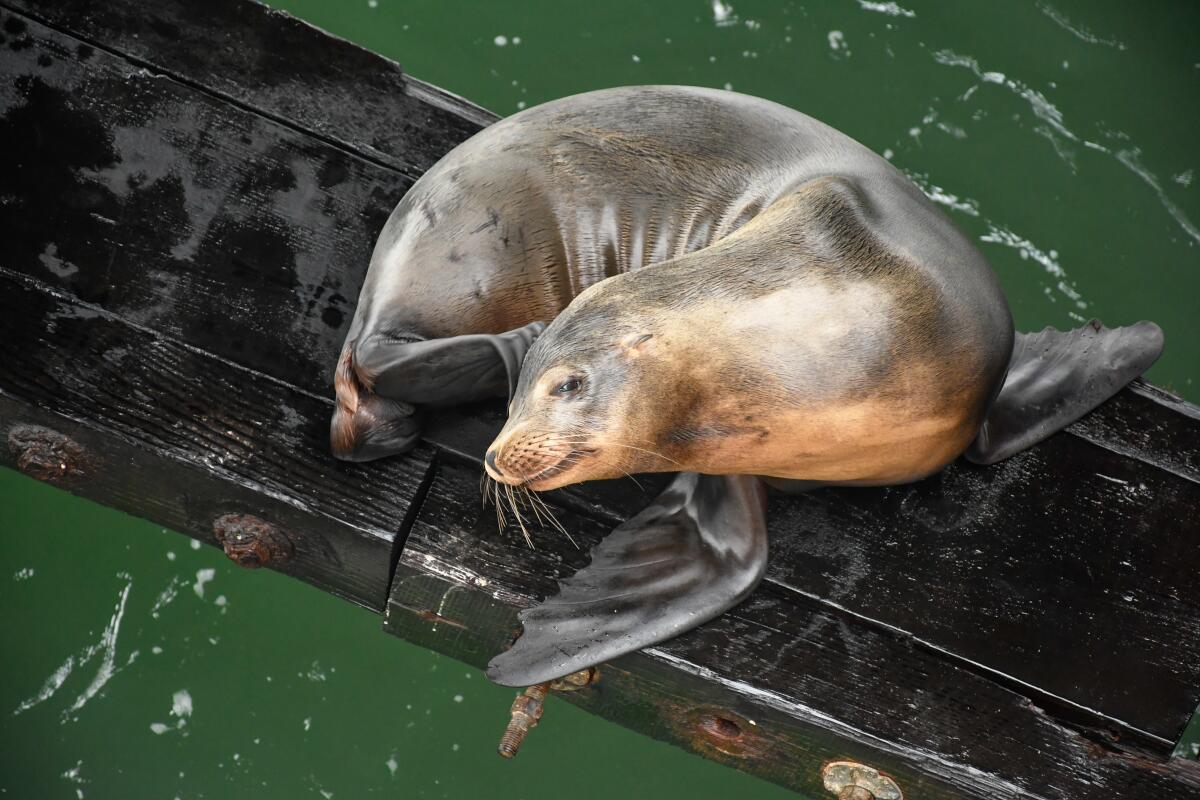
Eat seafood and hear sea lions on the Santa Cruz Municipal Wharf
Among the restaurants, I ate most recently at Makai Island Kitchen and Groggery, where the vibe is South Pacific and main dishes are $16-$24. My dinner was a winner. And there’s this bonus, which you’ll understand if you go there: It’s possible to remain sober and still feel as if the room is spinning.
One more thing about the wharf: Local boosters will want you to know that this is the longest wooden pier in the U.S., but much of its surface, where you’ll be walking or driving, is blacktop.
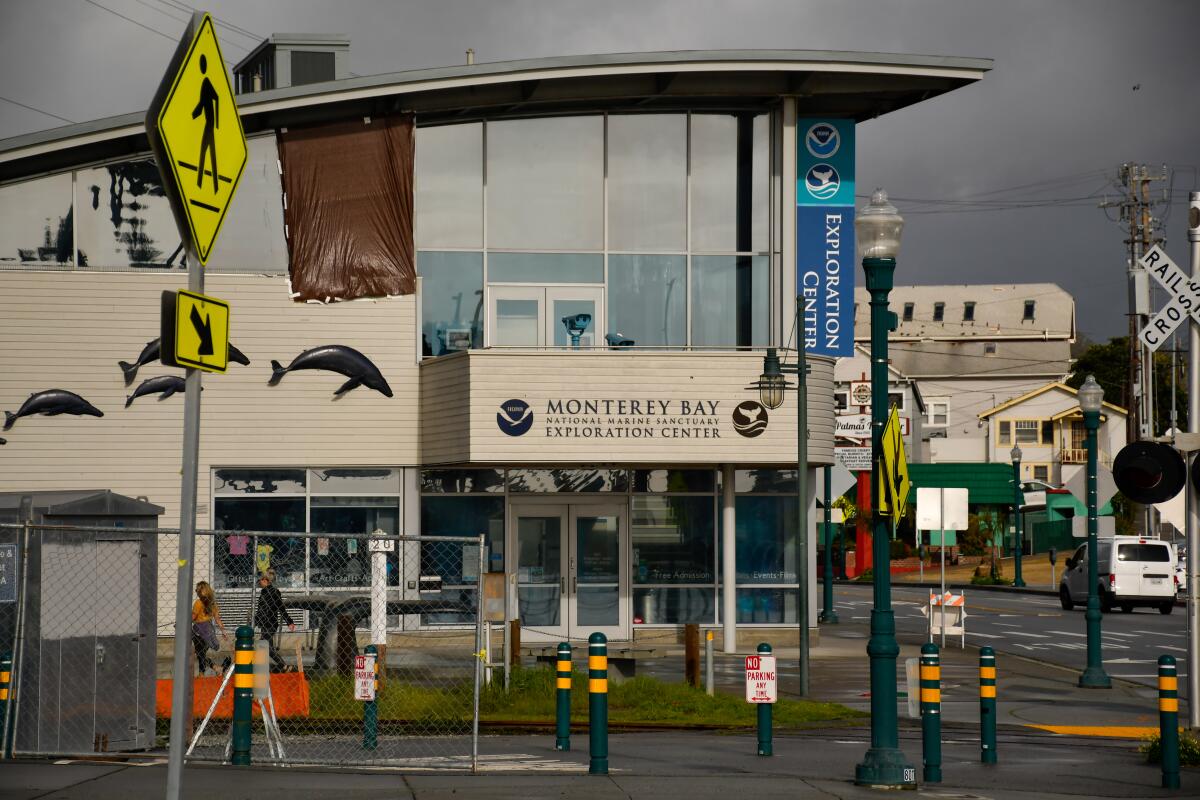
Soak up some science at the Monterey Bay National Marine Sanctuary Exploration Center
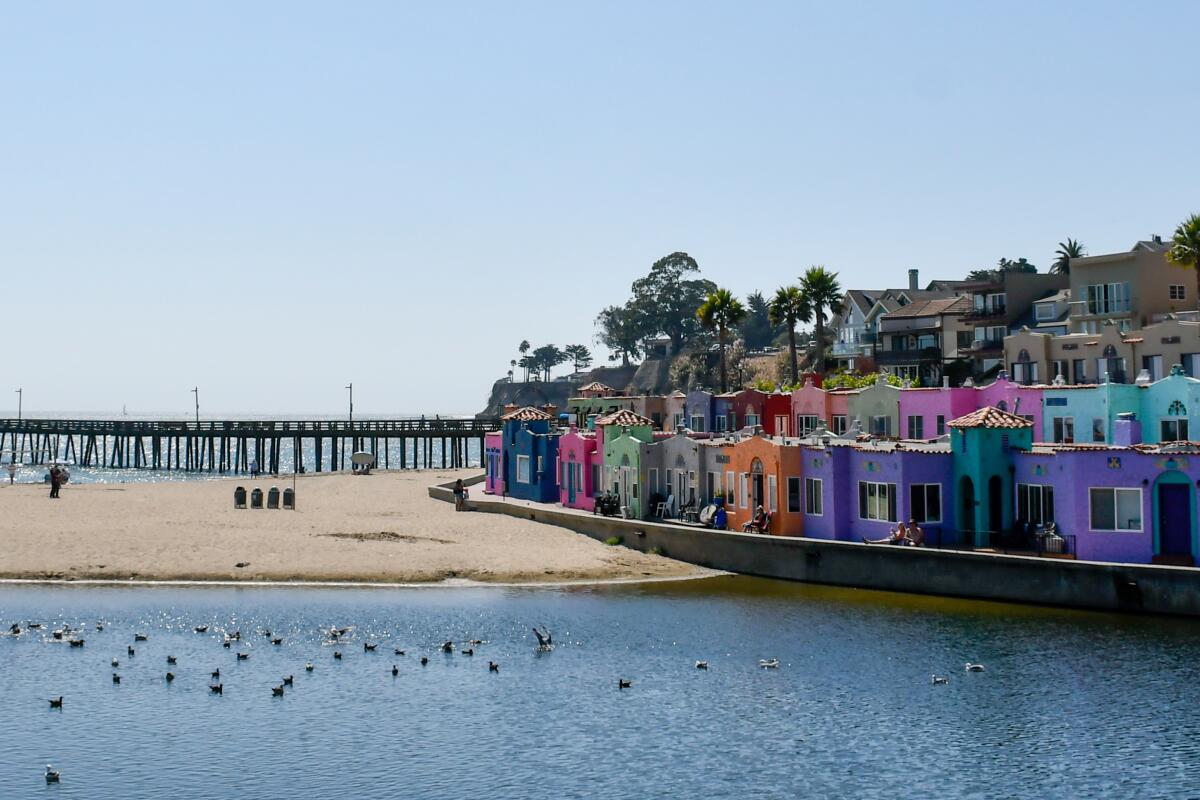
Stroll Capitola Village
The colorful beachfront apartments of Capitola Venetian Court are always good background for a photo or two, and there’s plenty of eating and drinking to be done along Esplanada. Be warned that when weather is warm parking can be tough, and the kitsch factor can get pretty high in the shops along Capitola Avenue and environs. The community is about 2 square miles with about 10,000 residents.
For a special occasion, there’s the Shadowbrook, which began with a log cabin along Soquel Creek in the 1920s, became a restaurant in the 1940s and added a cable car in the 1950s. These days you arrive at street level, then take the cable car down to the restaurant and bar, nestled in the canyon below. The citizen-critics of yelp give it 4 stars and I intend to try it soon. Dinner main dishes $24-$70.
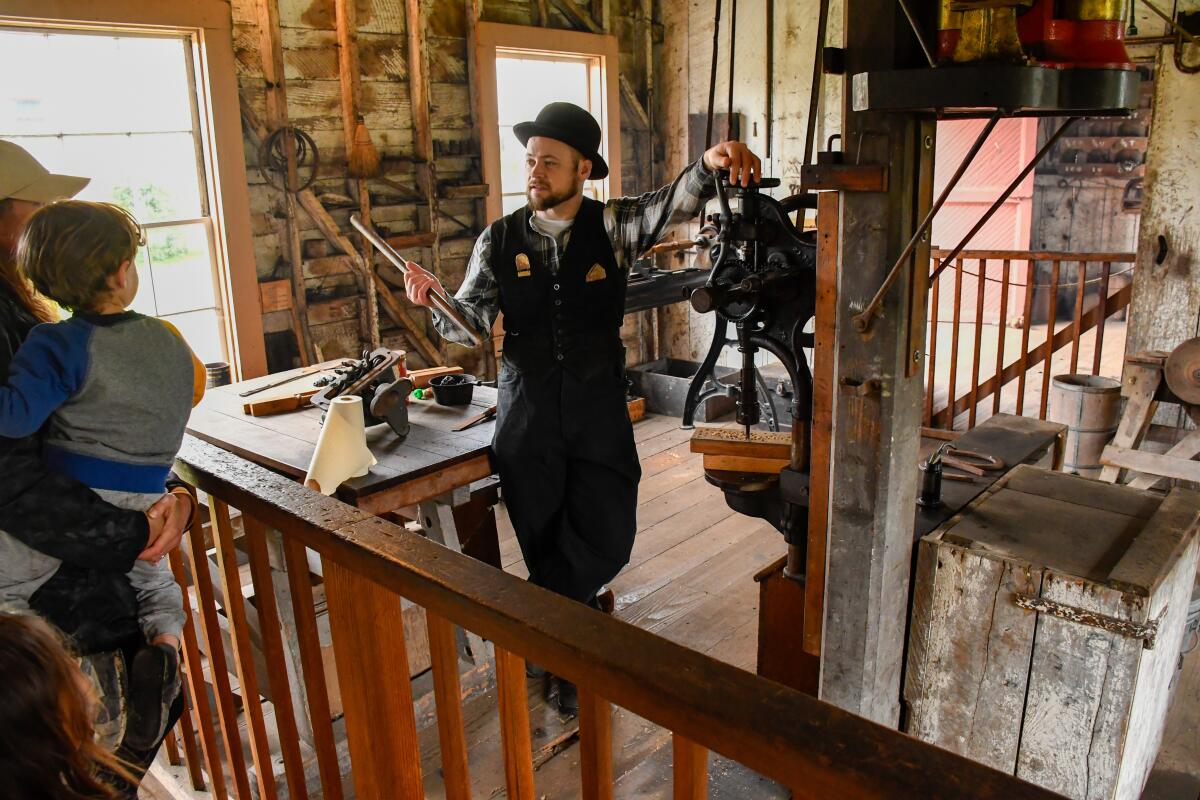
Bike a trail or join a blacksmith at Wilder Ranch State Park
The historic farmhouse and farm buildings are open. And they’re a kick, because volunteers in 1890s attire often staff them and because there are some farm animals too. We chatted with a blacksmith and a couple of kitchen experts. Admission: $10 per car.
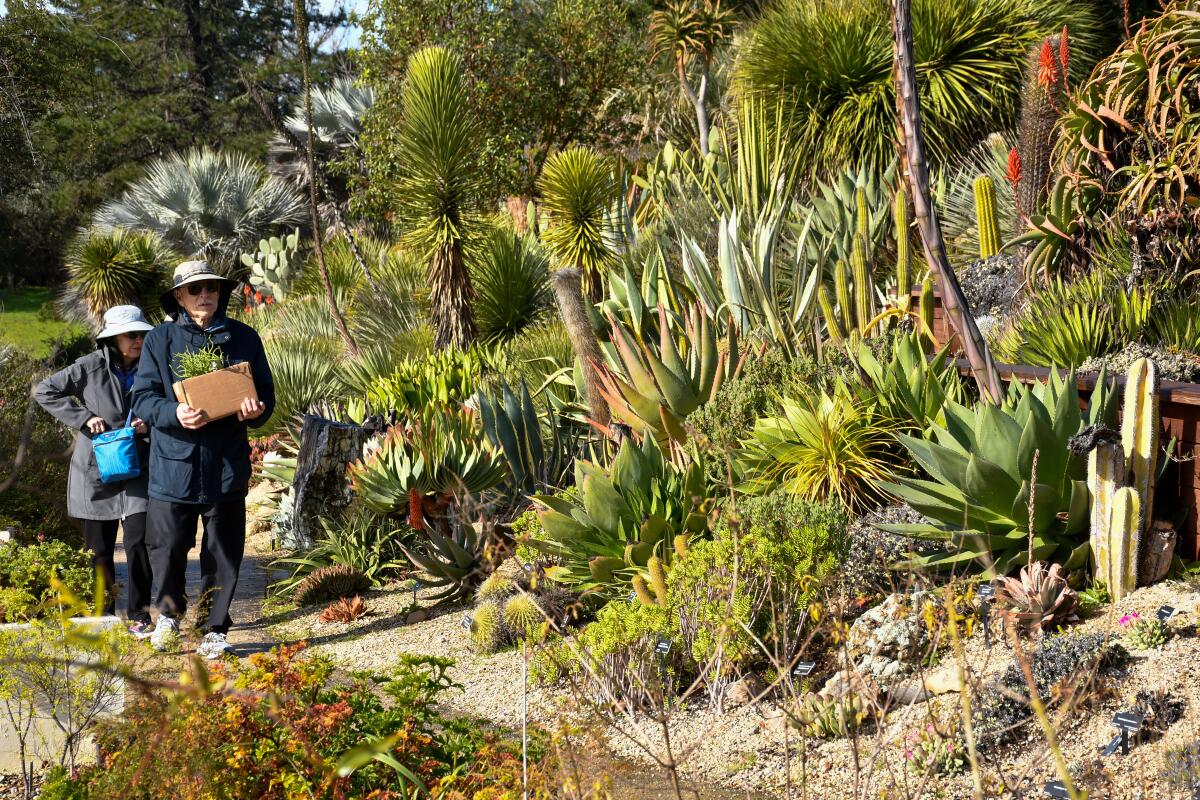
Smell the flowers at the Arboretum & Botanic Garden, UC Santa Cruz
And while you’re at the campus, keep in mind that the 2,000-acre UC Santa Cruz is a fairly remarkable piece of real estate. Once a ranch, the campus opened in 1965. It’s part redwood forest, part meadows, with 10 colleges spread among the trees and fields, including about 19,000 students in all.
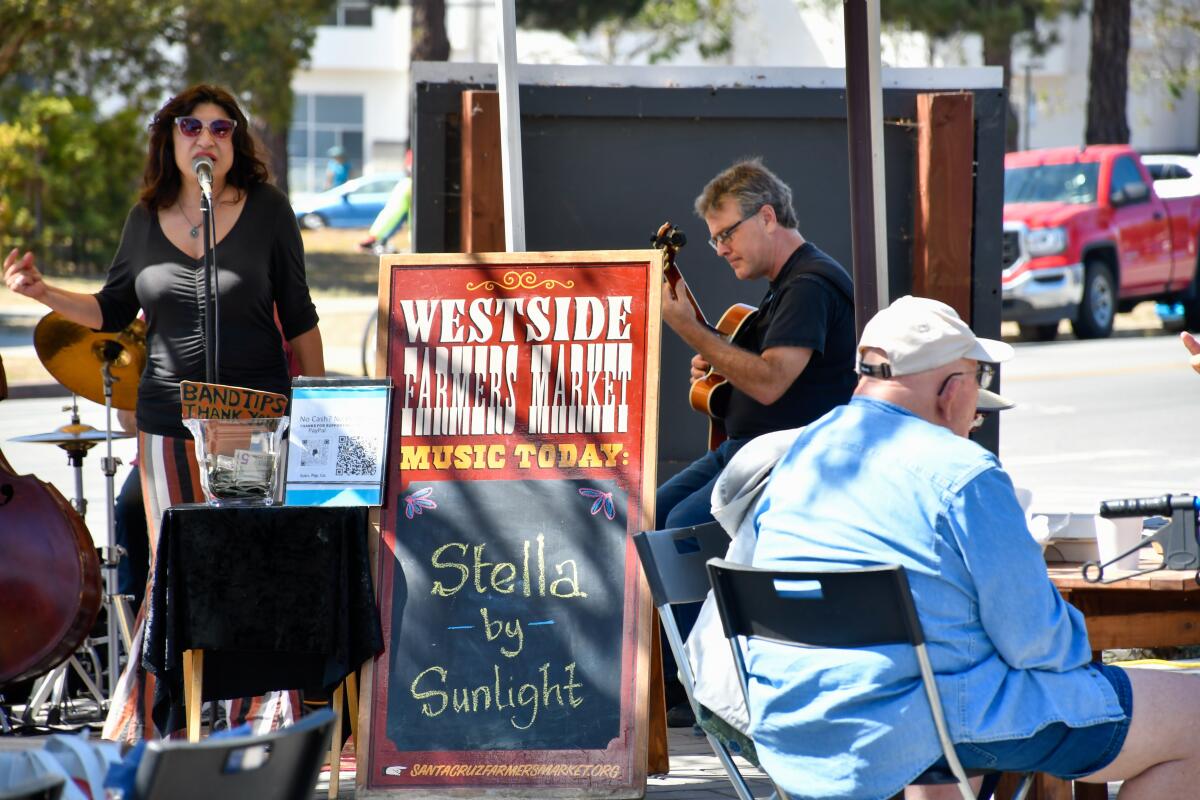
Grab a snack at the Santa Cruz Westside Community Farmers Market
There’s another year-round market on Wednesday afternoons at Cedar and Lincoln streets in downtown Santa Cruz.
Sign up for The Wild
We’ll help you find the best places to hike, bike and run, as well as the perfect silent spots for meditation and yoga.
You may occasionally receive promotional content from the Los Angeles Times.



